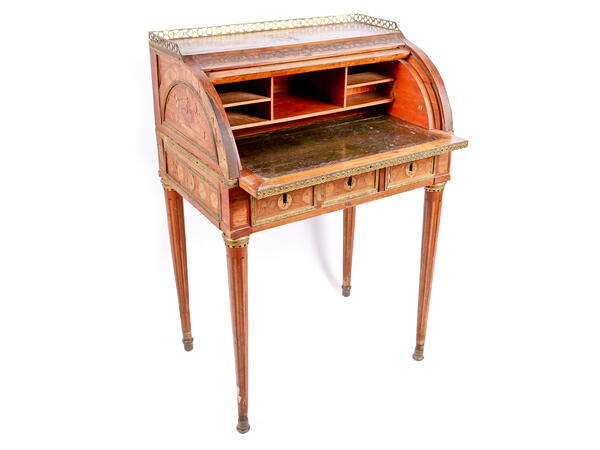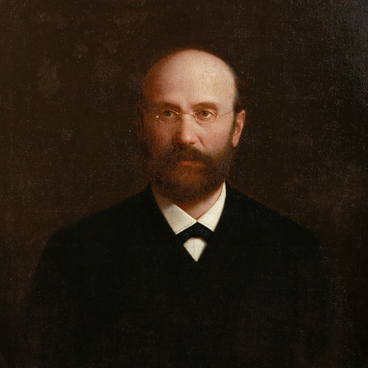In the Dubrovka village of Kasimov district, there was a huge estate of the noble Golitsyn family. It was built in the second half of the 18th century. The estate had wooden churches, a family crypt and a distillery. There was a large collection of furniture and art objects inside the owner’s house.
After the Russian revolution, the Golitsyns’ estate was nationalized: the land was handed over to the state, and the interior decorations, including furniture, paintings and vases, were sent to the Kasimov Museum-Reserve. Thanks to this, the artifacts have survived to this day: during the Great Patriotic War, the estate was badly damaged. The facade was restored, but the building was not used for many years, so it became unsafe. Now the house is abandoned.
The Museum-Reserve houses a carved secretaire of the 18th century, which belonged to the Golitsyns. It was a wooden bureau with a hinged board, which turned into a desk. It had many shelves, drawers and secret compartments inside. Letters, important documents and valuables were kept in them. The secretaire was decorated with floral ornaments and images of people.
Secretaires were first manufactured in the 1730s. At that time, they were considered ‘furniture for ladies’, they looked like small tables with a cabinet for papers and a hinged tabletop for work. Later, the size of secretaires increased: additional drawers and compartments were added.
There were different kinds of secretaires: travel, household, cosmetic, medical. For example, there are memories of contemporaries of a travel secretaire, which Napoleon Bonaparte always took with him. When folded, it occupied little space. The drawers could be used to store and transport writing utensils. When necessary, the secretaire could be turned into a complete writing desk and was used under any circumstances, even on the battlefield or in a carriage.
Medical secretaires were used by doctors to store equipment and medicines. The cosmetic secretaire resembled a cosmetics box with many compartments. There was perfume, powder and other products inside. Secretaries are still produced and used in interiors.
After the Russian revolution, the Golitsyns’ estate was nationalized: the land was handed over to the state, and the interior decorations, including furniture, paintings and vases, were sent to the Kasimov Museum-Reserve. Thanks to this, the artifacts have survived to this day: during the Great Patriotic War, the estate was badly damaged. The facade was restored, but the building was not used for many years, so it became unsafe. Now the house is abandoned.
The Museum-Reserve houses a carved secretaire of the 18th century, which belonged to the Golitsyns. It was a wooden bureau with a hinged board, which turned into a desk. It had many shelves, drawers and secret compartments inside. Letters, important documents and valuables were kept in them. The secretaire was decorated with floral ornaments and images of people.
Secretaires were first manufactured in the 1730s. At that time, they were considered ‘furniture for ladies’, they looked like small tables with a cabinet for papers and a hinged tabletop for work. Later, the size of secretaires increased: additional drawers and compartments were added.
There were different kinds of secretaires: travel, household, cosmetic, medical. For example, there are memories of contemporaries of a travel secretaire, which Napoleon Bonaparte always took with him. When folded, it occupied little space. The drawers could be used to store and transport writing utensils. When necessary, the secretaire could be turned into a complete writing desk and was used under any circumstances, even on the battlefield or in a carriage.
Medical secretaires were used by doctors to store equipment and medicines. The cosmetic secretaire resembled a cosmetics box with many compartments. There was perfume, powder and other products inside. Secretaries are still produced and used in interiors.


